
John Barrington, 1st Viscount Barrington, known as John Shute until 1710, was an English dissenting theologian and Whig politician who sat in the House of Commons from 1715 to 1723.
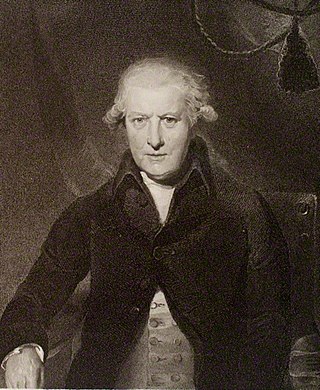
William Wildman Shute Barrington, 2nd Viscount Barrington, PC, was a British politician who sat in the House of Commons for 38 years from 1740 to 1778. He was best known for his two periods as Secretary at War during Britain's involvement in the Seven Years War and American War of Independence.
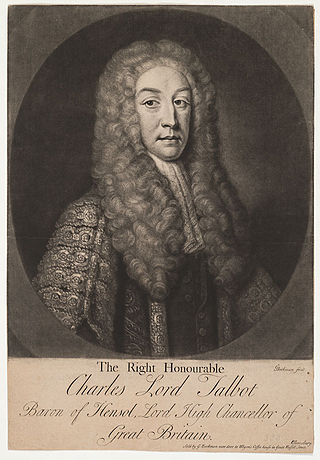
Earl Talbot is a title that has been created twice in the Peerage of Great Britain. This branch of the Talbot family descends from the Hon. Sir Gilbert Talbot, third son of John Talbot, 2nd Earl of Shrewsbury. His great-great-great-grandson, the Right Reverend William Talbot, was Bishop of Oxford, of Salisbury and of Durham. His eldest son Charles Talbot was a prominent lawyer and politician. In 1733, he was raised to the Peerage of Great Britain as Lord Talbot, Baron of Hensol, in the County of Glamorgan, and then served as Lord High Chancellor of Great Britain from 1733 to 1737.

Earl of Powis (Powys) is a title that has been created three times. The first creation came in the Peerage of England in 1674 in favour of William Herbert, 3rd Baron Powis, a descendant of William Herbert, 1st Earl of Pembroke. In 1687, he was further honoured when he was made Marquess of Powis.
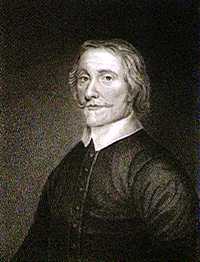
Viscount Valentia is a title in the Peerage of Ireland. It has been created twice. The first creation came in 1621 for Henry Power. A year later, his kinsman Sir Francis Annesley, 1st Baronet, was given a "reversionary grant" of the viscountcy, which stated that on Power's death Annesley would be created Viscount Valentia. Annesley, a member of an influential Anglo-Irish family which descended from Newport Pagnell in the County of Buckinghamshire, was a favourite of James I, who granted him land in Ireland, notably the fort of Mountnorris in County Armagh. He was knighted in 1616, created a baronet, of Newport Pagnell in the County of Buckingham, in the Baronetage of Ireland in 1620 and Baron Mountnorris, of Mountnorris in the County of Armagh, in 1628.
Viscount Molesworth, of Swords in the County of Dublin, is a title in the Peerage of Ireland. It was created in 1716 for Robert Molesworth. He was made Lord Molesworth, Baron of Philipstown, of King's County, at the same time, also in the Peerage of Ireland. Molesworth had been invested as member of the Irish Privy Council in 1697, represented Camelford, Lostwithiel, East Retford and Mitchell in the British House of Commons and served as British Ambassador to Denmark. His elder son, the second Viscount, notably served as Ambassador to the Kingdom of Sardinia, the Grand Duchy of Tuscany and the Republic of Venice. He was succeeded by his younger brother, the third Viscount. He was a Field Marshal in the Army. On the death of his son, the fourth Viscount, this line of the family failed, and the titles passed to the latter's first cousin, the fifth Viscount. He was the eldest son of the Hon. William Molesworth, third son of the first Viscount. His son, the sixth Viscount, was a Major-General in the Army, who was lost in the wreck of Arniston. On his death, this line of the family also failed and the titles were inherited by his second cousin, the seventh Viscount. He was the eldest son of Richard, third son of the Hon. William Molesworth, third son of the first Viscount. He was succeeded by his nephew, the eighth Viscount. As of 2010, the titles are held by the latter's great-grandson, the twelfth Viscount, who succeeded his father in 1997.
Viscount Hawarden is a title in the Peerage of Ireland.

Baron Monson, of Burton in the County of Lincoln, is a title in the Peerage of Great Britain. It was created in 18th century for Sir John Monson, 5th Baronet. The Monson family descends from Thomas Monson, of Carleton, Lincolnshire. He sat as Member of Parliament for Lincolnshire, Castle Rising and Cricklade. On 29 June 1611 he was created a Baronet, of Carleton in the County of Lincoln, in the Baronetage of England. His eldest son, the second Baronet, fought as a Royalist during the Civil War and also represented Lincoln in the House of Commons.

Baron Castlemaine, of Moydrum in the County of Westmeath, is a title in the Peerage of Ireland. It was created in 1812 for William Handcock, with remainder to his younger brother Richard Handcock. Handcock represented Athlone in Parliament and also served as Governor of County Westmeath. In 1822 he was further honoured when he was made Viscount Castlemaine in the Peerage of Ireland, with remainder to the heirs male of his body.

Earl of Bridgewater was a title that has been created twice in the Peerage of England, once for the Daubeny family (1538) and once for the Egerton family (1617). From 1720 to 1803, the Earls of Bridgewater also held the title of Duke of Bridgewater. The 3rd Duke of Bridgewater is famously known as the "Canal Duke", for his creation of a series of canals in North West England.
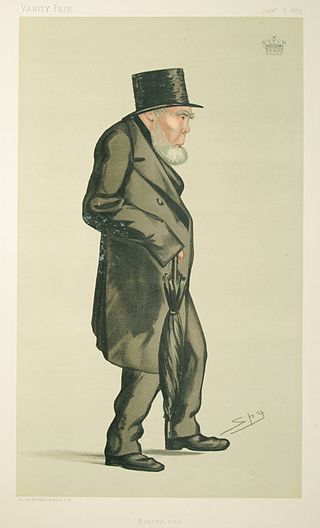
Earl Mount Cashell, of Cashell, County Tipperary, was a title in the Peerage of Ireland. It was created in 1781 for Stephen Moore, 2nd Viscount Mount Cashell, who had previously represented Lismore in the Irish House of Commons.
Henry Digby, 1st Earl Digby was a British peer and Member of Parliament.
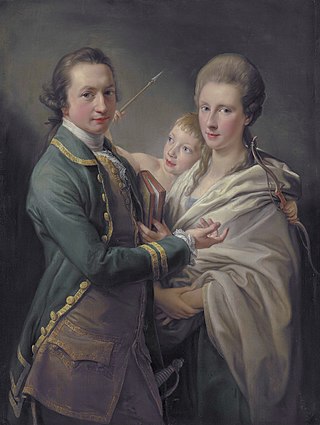
Arthur Saunders Gore, 2nd Earl of Arran KP, PC (Ire) styled The Honourable Arthur Gore from 1758 to 1762 and Viscount Sudley from 1762 to 1773, was an Irish peer and politician.
Patrick William Daines Barrington, 11th Viscount Barrington of Ardglass, was an Irish peer and a writer of humorous verse.

George William Barrington, 7th Viscount Barrington, PC, was a British Conservative politician. He held office under Lord Salisbury as Captain of the Yeomen of the Guard between 1885 and 1886 and as Captain of the Honourable Corps of Gentlemen-at-Arms in 1886.
William Keppel Barrington, 6th Viscount Barrington, styled The Honourable from 1814 until 1829, was a British businessman and politician.

Henry Frederick Francis Adair Barrington, was a South African lawyer, farmer and member of Parliament.
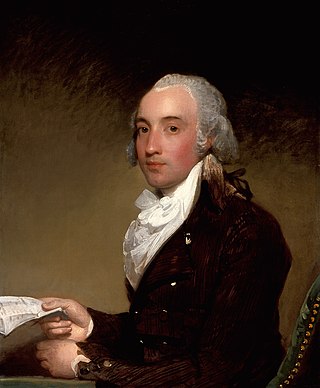
Richard James Barrington, 4th Viscount Barrington, was a British aristocrat.
George Barrington, 5th Viscount Barrington, was a British minister and aristocrat.
Percy Barrington, 8th Viscount Barrington, was a British soldier and landowner.














